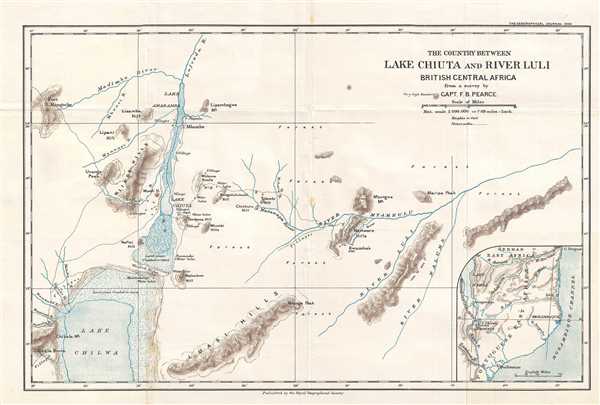1900 Pearce Map of Malawi and Mozambique (British Central Africa Protectorate)
LakeChiutaRiverLuli-pearce-1900
Title
1900 (dated) 10.5 x 15.75 in (26.67 x 40.005 cm) 1 : 500000
Description
This map was created by Captain F. B. Pearce and printed by the Royal Geographical Society in its Geographical Journal in 1900.
Cartographer
Royal Geographical Society (fl. 1830 - present) is a British Society established in 1830 to promote geographical science and exploration. Originally titled the "Geographical Society of London", the RGS received its royal charter from Queen Victoria in 1859 shortly after absorbing several similar but more regional societies including the African Association, the Raleigh Club and the Palestine Association. The RGS sponsored many of the most important and exciting voyages of exploration ever undertaken, including the exploration of Charles Darwin, David Livingstone, Robert Falcon Scott, Richard F. Burton, John Speke, George Hayward, H. M Stanley, Ernest Shackleton and Sir Edmond Hillary. Today, the RGS remains a leading global sponsor of geographical and scientific studies. The Society is based in Lowther Lodge, South Kensington, London. More by this mapmaker...

